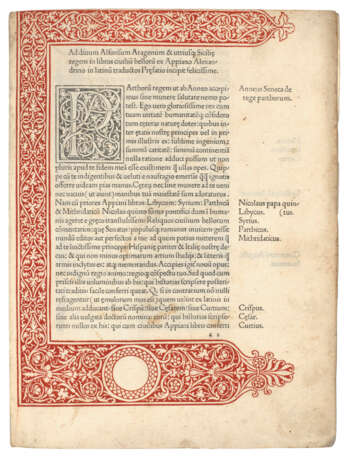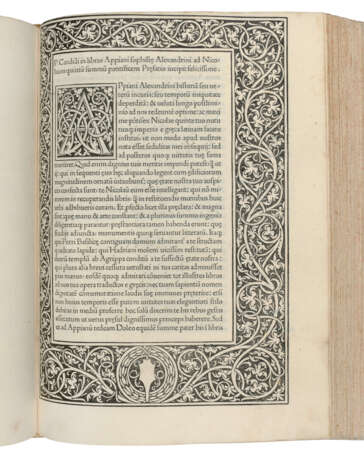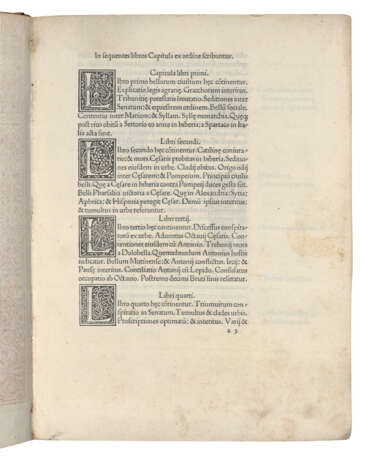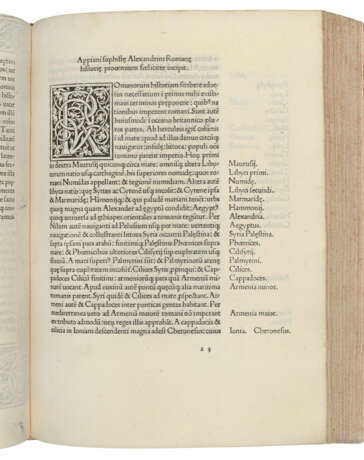ID 1349634
Lot 104 | APPIANUS (c.100-c.170)
Estimate value
£ 8 000 – 12 000
De bellis civilibus – Historia Romana. Translated by Petrus Candidus Decembrius (1399-1477). Venice: Bernhard Maler (Pictor), Erhard Ratdolt, and Peter Löslein, 1477
First complete edition of the extant portions of Appian's Roman history, giving an account of various countries and their inhabitants from the earliest time to their incorporation into the Roman Empire. Appian's humanist translator, Pier Candido Decembrio, divided the extant books into 2 parts; part II only was printed by Vindelinus de Spira in 1472. Redgrave, Radolt's bibliographer, wrote: 'To my mind there are few printed books of any age which can be compared with the Appian of 1477, with its splendid black ink, its vellum-like paper, and the finished excellence of its typography' (p.13). It is one of Ratdolt's earliest Venetian imprints, following only Regiomontanus's Calendarium, and contains the first use of both of the fine woodcut border pieces. The first is printed in red (in a separate press-pull after the type-page) as in a few copies only; the majority of copies have both borders printed in black. ISTC ia00928000; H *1307; BMC V, 244 (IB. 20484-7); GW 2290; Polain(B) 284; IGI 763; Essling 221; Redgrave 3-4; Sander 482; Goff A-928.
2 volumes in one, royal half-sheet quarto (276 x 203). 31-33 lines, printed shoulder notes. Type: 1:109R. Full woodcut white-vine border printed in black separately after the type-page opening the first work, three-sided woodcut white-vine border printed in red opening second work, woodcut white-on-black initials in two sizes (lacking first blank to first work, title to first work trimmed just into head of woodcut border with slight loss, leaf a10 in first work loose, occasional light scattered spotting, occasional light marginal dampstaining). Later vellum (upper joint cracking, small split to lower joint at head, extremities rubbed) Provenance: a small number of ink inscriptions in a neat humanist hand, c.1500 to second work on first blank, blank verso of final leaf, and a few other annotations to margins.
| Artist: | Appianus Alexandrinus (95 - 170) |
|---|---|
| Place of origin: | Italy, Europe |
| Auction house category: | Antiquarian books, Books and manuscripts, Printed books |
| Artist: | Appianus Alexandrinus (95 - 170) |
|---|---|
| Place of origin: | Italy, Europe |
| Auction house category: | Antiquarian books, Books and manuscripts, Printed books |
| Address of auction |
CHRISTIE'S 8 King Street, St. James's SW1Y 6QT London United Kingdom | |
|---|---|---|
| Preview |
| |
| Phone | +44 (0)20 7839 9060 | |
| Buyer Premium | see on Website | |
| Conditions of purchase | Conditions of purchase |






